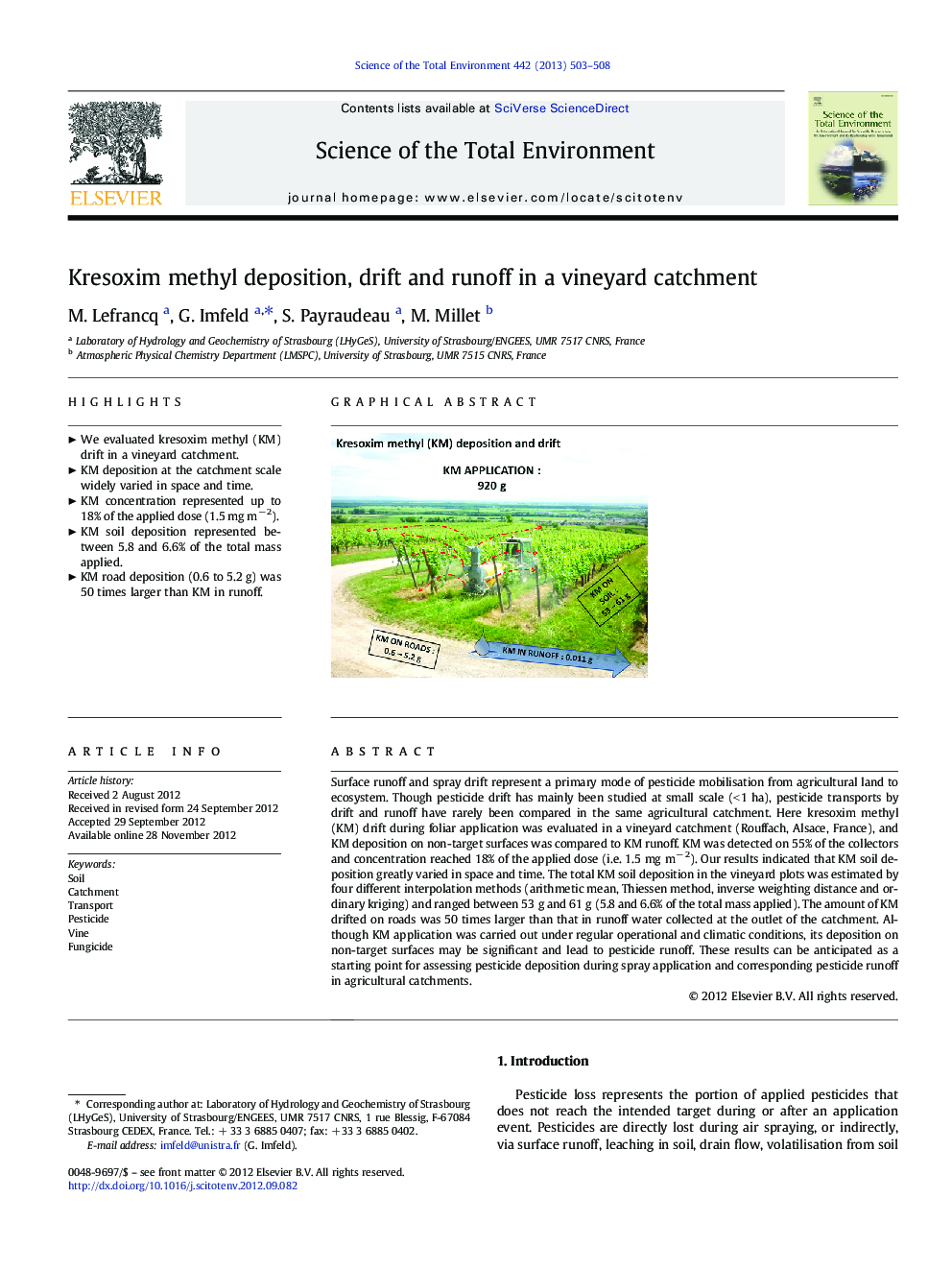| Article ID | Journal | Published Year | Pages | File Type |
|---|---|---|---|---|
| 4429023 | Science of The Total Environment | 2013 | 6 Pages |
Surface runoff and spray drift represent a primary mode of pesticide mobilisation from agricultural land to ecosystem. Though pesticide drift has mainly been studied at small scale (< 1 ha), pesticide transports by drift and runoff have rarely been compared in the same agricultural catchment. Here kresoxim methyl (KM) drift during foliar application was evaluated in a vineyard catchment (Rouffach, Alsace, France), and KM deposition on non-target surfaces was compared to KM runoff. KM was detected on 55% of the collectors and concentration reached 18% of the applied dose (i.e. 1.5 mg m− 2). Our results indicated that KM soil deposition greatly varied in space and time. The total KM soil deposition in the vineyard plots was estimated by four different interpolation methods (arithmetic mean, Thiessen method, inverse weighting distance and ordinary kriging) and ranged between 53 g and 61 g (5.8 and 6.6% of the total mass applied). The amount of KM drifted on roads was 50 times larger than that in runoff water collected at the outlet of the catchment. Although KM application was carried out under regular operational and climatic conditions, its deposition on non-target surfaces may be significant and lead to pesticide runoff. These results can be anticipated as a starting point for assessing pesticide deposition during spray application and corresponding pesticide runoff in agricultural catchments.
Graphical abstractFigure optionsDownload full-size imageDownload as PowerPoint slideHighlights► We evaluated kresoxim methyl (KM) drift in a vineyard catchment. ► KM deposition at the catchment scale widely varied in space and time. ► KM concentration represented up to 18% of the applied dose (1.5 mg m− 2). ► KM soil deposition represented between 5.8 and 6.6% of the total mass applied. ► KM road deposition (0.6 to 5.2 g) was 50 times larger than KM in runoff.
